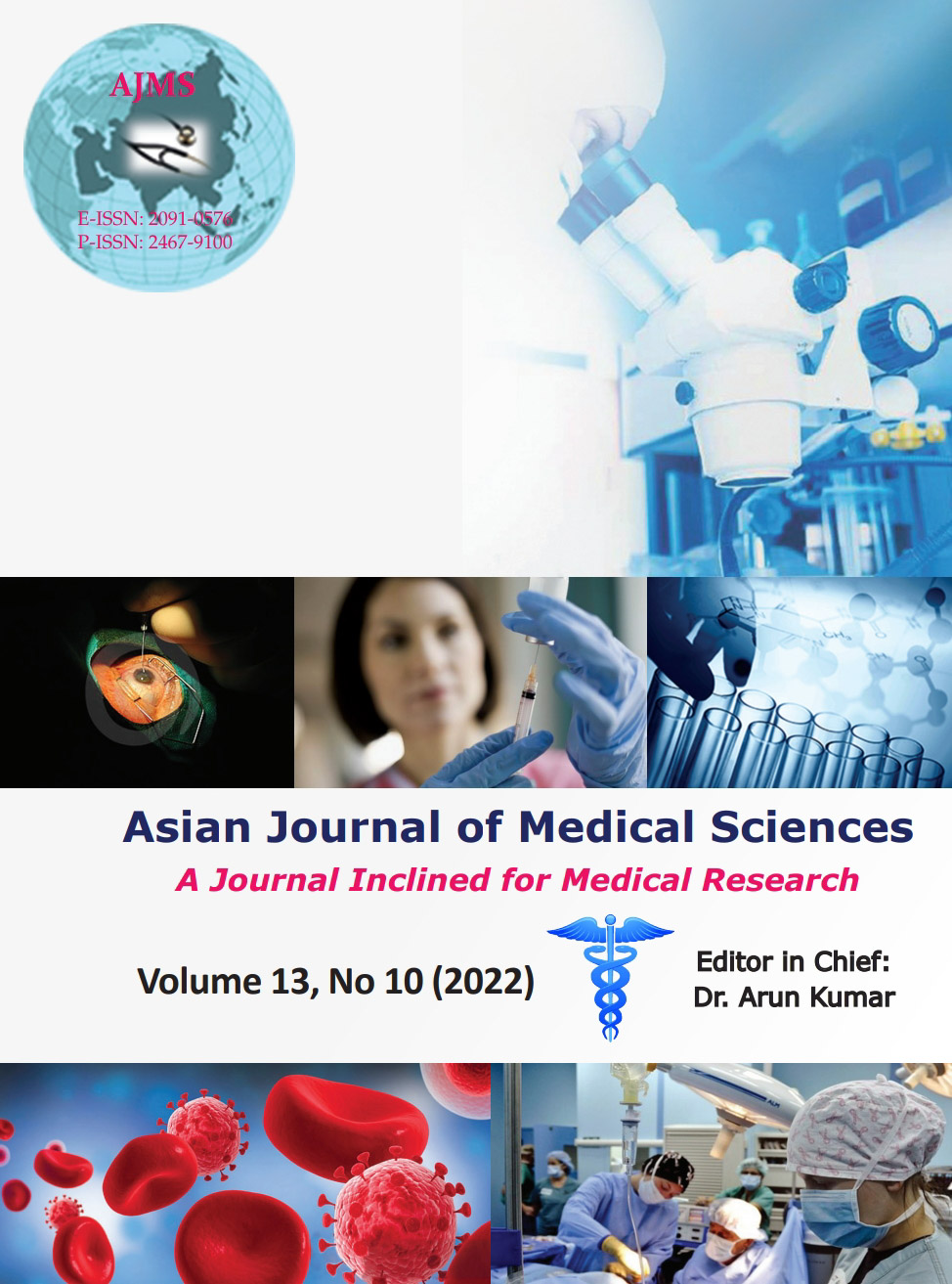Evaluation of rapid antigen test (RAT) screening test among people attending fever clinic of Shimoga Institute of Medical Sciences, Shivamogga: An analytical cross-sectional study
Keywords:
Rapid antigen test; Reverse transcriptase-polymerase chain reaction; Sensitivity; SpecificityAbstract
Background: COVID-19 pandemic continues to be a public health threat. Rapid antigen tests (RATs) for the detection of SARS-CoV-2 infection will help in formulation of clinical and public health strategies for the control of transmission. In India, 49% of COVID-19 tests done are RATs.1 The sensitivity of RAT is 50.6–84%. RAT has specificity ranging from 99.3% to 100%.2 The present study aims at evaluating the RAT screening test done on people attending fever clinic of Shimoga Institute of Medical Sciences, Shivamogga.
Aims and Objectives: The objectives of the study were to evaluate the COVID-19 RAT screening test with reverse transcriptase-polymerase chain reaction (RT-PCR) as the gold standard test done at fever clinic of SIMS, Shimoga.
Materials and Methods: An observational, cross-sectional analytical study was conducted for a period of 1 month, May 2021. The study participants included all the people attending fever clinic of SIMS, Shimoga. Assuming the sensitivity of RAT to be 85%, power of 80%, and precision of 5%, the calculated sample size was 204. Considering non-response rate of 10%, the final sample size was 224. Secondary data regarding contact number of the people attending fever clinic were collected from the COVID-19 test register. Oral consent was taken after explaining about study and assuring confidentiality. Telephonic interview was done to collect relevant information. Analysis was done using Epi Info software version 7.2.4.0. Descriptive statistics such as percentages and analytical statistics such as Student’s t-test and Chi-square test were used.
Results: Overall positivity rate was 43.7%. About 71% of people had contact history. Sensitivity and specificity of RAT test were found to be 64.2% and 97.2%, respectively, and were comparable with the previous studies. Significant difference was found (P<0.05) between RAT and RT-PCR results.
Conclusion: Significant difference was found between RAT and RT-PCR results which indicate that RAT is not diagnostic for people who test positive in RT-PCR. Sensitivity of RAT is relatively less in our study (but crucial in detecting disease early) and hence we strongly recommend that RT-PCR for those who test negative for RAT test.
Downloads
Downloads
Published
How to Cite
Issue
Section
License
Copyright (c) 2022 Asian Journal of Medical Sciences

This work is licensed under a Creative Commons Attribution-NonCommercial 4.0 International License.
Authors who publish with this journal agree to the following terms:
- The journal holds copyright and publishes the work under a Creative Commons CC-BY-NC license that permits use, distribution and reprduction in any medium, provided the original work is properly cited and is not used for commercial purposes. The journal should be recognised as the original publisher of this work.
- Authors are able to enter into separate, additional contractual arrangements for the non-exclusive distribution of the journal's published version of the work (e.g., post it to an institutional repository or publish it in a book), with an acknowledgement of its initial publication in this journal.
- Authors are permitted and encouraged to post their work online (e.g., in institutional repositories or on their website) prior to and during the submission process, as it can lead to productive exchanges, as well as earlier and greater citation of published work (See The Effect of Open Access).




